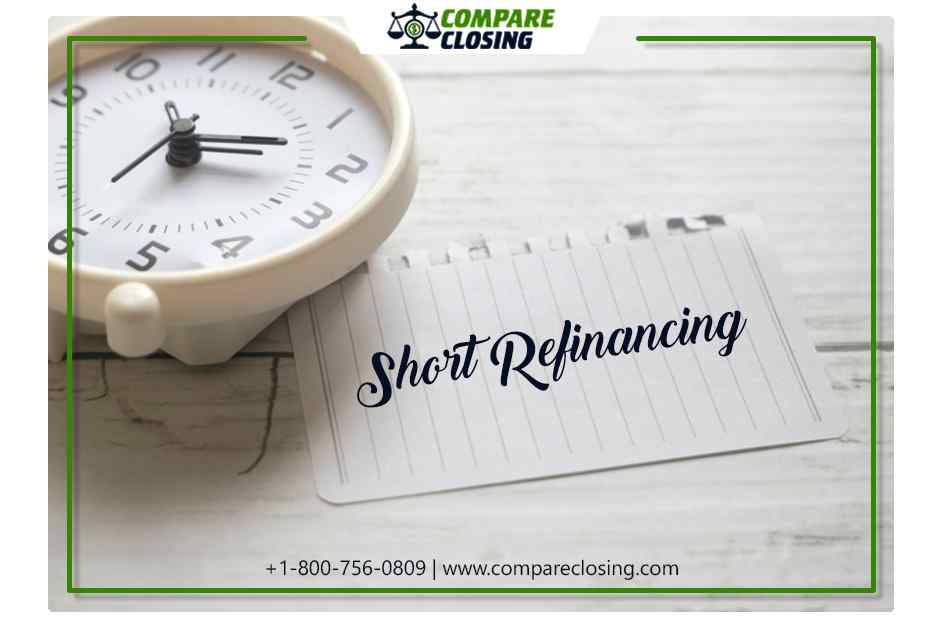Table of Contents
- What Are Netting Escrows & How Does It Work?: The Best Guide - January 2, 2024
- The Secret About Prescriptive Easement: Top Guide 1 Must Know - December 4, 2023
- About Home Equity Loans In Texas And How Can One Obtain It - November 27, 2023
What is a Short Refinancing?
It is a financial term referring to the refinancing of a mortgage by a lender for a borrower who is currently in default on their mortgage payments.
Short refinancing of a mortgage is done by the lender for the purpose of helping a borrower avoid foreclosure.
A new loan amount is usually less than the existing outstanding loan amount, and the difference is sometimes forgiven by the lender.
Even though the payment on the new loan will be lower, sometimes a lender chooses short refinance just because it is more cost-effective than the foreclosure proceedings.
How does a short refinance work?
The lender may be forced to foreclose on the home when a borrower cannot pay their mortgage.
As we know the mortgage is a loan that is secured by the collateral of a borrower’s property, the borrower is obliged to pay back the debt with a predetermined set of payments.
As mortgage, is one of the most common debt instruments, it is used by individuals and businesses to make large real estate purchases without paying the entire value of the purchase up front.
Over the number of years, the borrower repays the loan, along with interest, till the entire amount is paid off and they own the property free and clear.
If a borrower is unable to make payments on their mortgage, the loan goes into default.
Then the bank has a few options of which foreclosure is the most widely known option by the lenders, it means the lender takes control of the property, dislodges the homeowner, and sells the home.
However, foreclosure is a long and expensive legal process that a lender might want to avoid because they may not receive any payments for up to a year after beginning the foreclosure process and they will also lose out on fees associated with the procedure.
Some lenders may offer a borrower who is at risk of foreclosure the solution of a short refinance.
A borrower too may ask for this option of short refinance. These are advantageous for the borrowers – A short refinance allows a borrower to keep the home and reduces the amount owed on the property.
The downside of this being because they’re not paying the full amount of the original mortgage the borrower’s credit score will take a hit.
Difference between a short refinance and other foreclosure options
Among several alternatives to foreclosure a short refinance is just one of them, which could be more cost-effective for the lender.
Another possible solution is to enter into a forbearance agreement which is a temporary postponement of mortgage payments.
The borrower and the lender negotiate the terms of a forbearance agreement.
A lender could also choose for a deed in lieu of foreclosure that requires the borrower to deed the collateral property back to the lender meaning giving up the property in exchange for release from the obligation of paying the mortgage.
Example of a short refinance
Suppose the market value of a borrower’s home dropped from $200,000 to $150,000, and he still owes $180,000 on the property.
With a short refinance, the lender would allow him to take out a new loan for $150,000, and the borrower wouldn’t have to pay back the difference of $30,000.
With this arrangement and he would have a lower principal and also, his monthly payments would be lower, which could help him better afford it.
Conclusion
Instead of going through a lengthy, expensive foreclosure, a lender may prefer to offer a short refinance to a borrower.
While a short refinance could leave a dent in the borrower’s credit but even late or missed mortgage payments will do the same.
A forbearance agreement or a deed in lieu of foreclosure may be considered by lenders as both may be more cost-effective.
Amanda Byford
Amanda Byford has bought and sold many houses in the past fifteen years and is actively managing an income property portfolio consisting of multi-family properties. During the buying and selling of these properties, she has gone through several different mortgage loan transactions. This experience and knowledge have helped her develop an avenue to guide consumers to their best available option by comparing lenders through the Compare Closing business.





